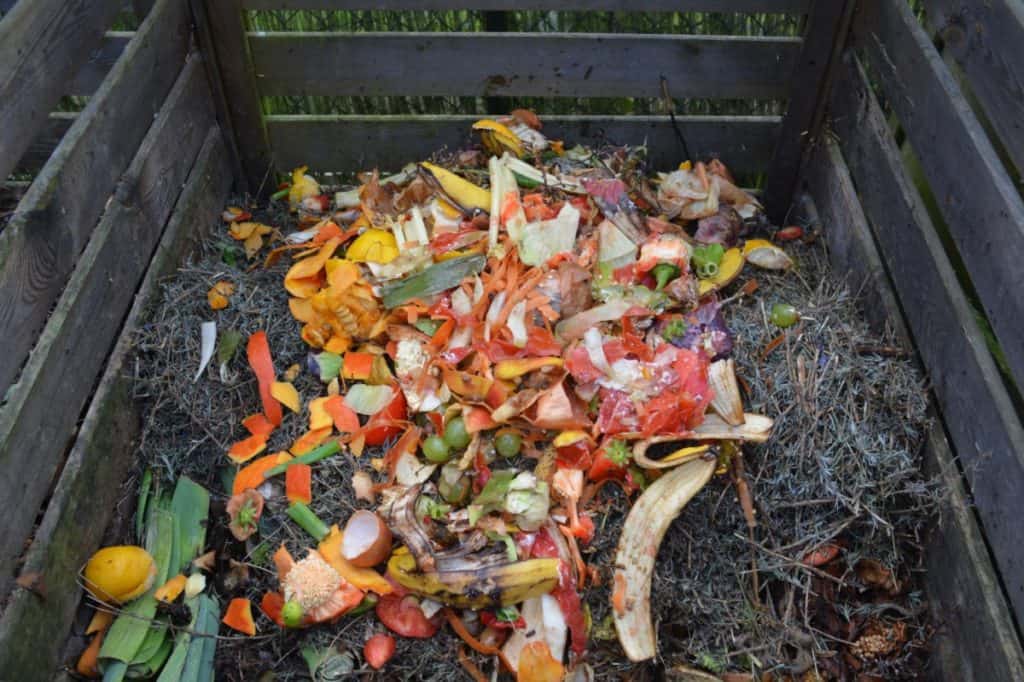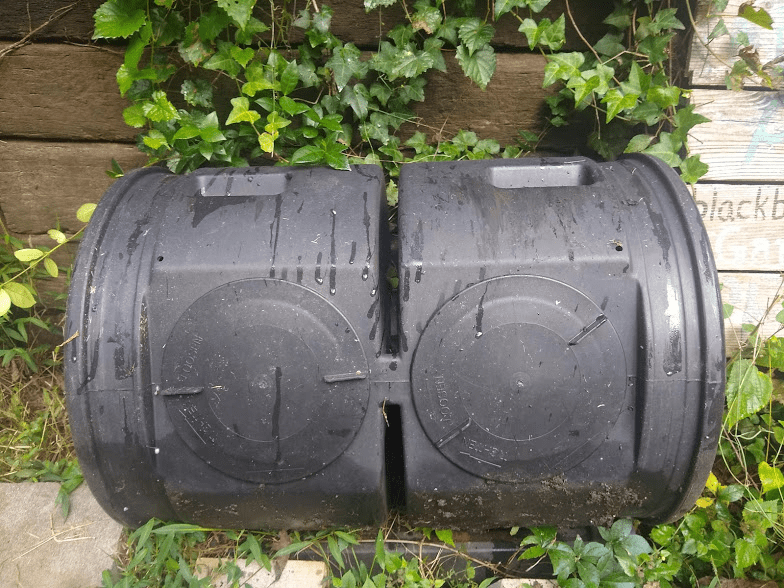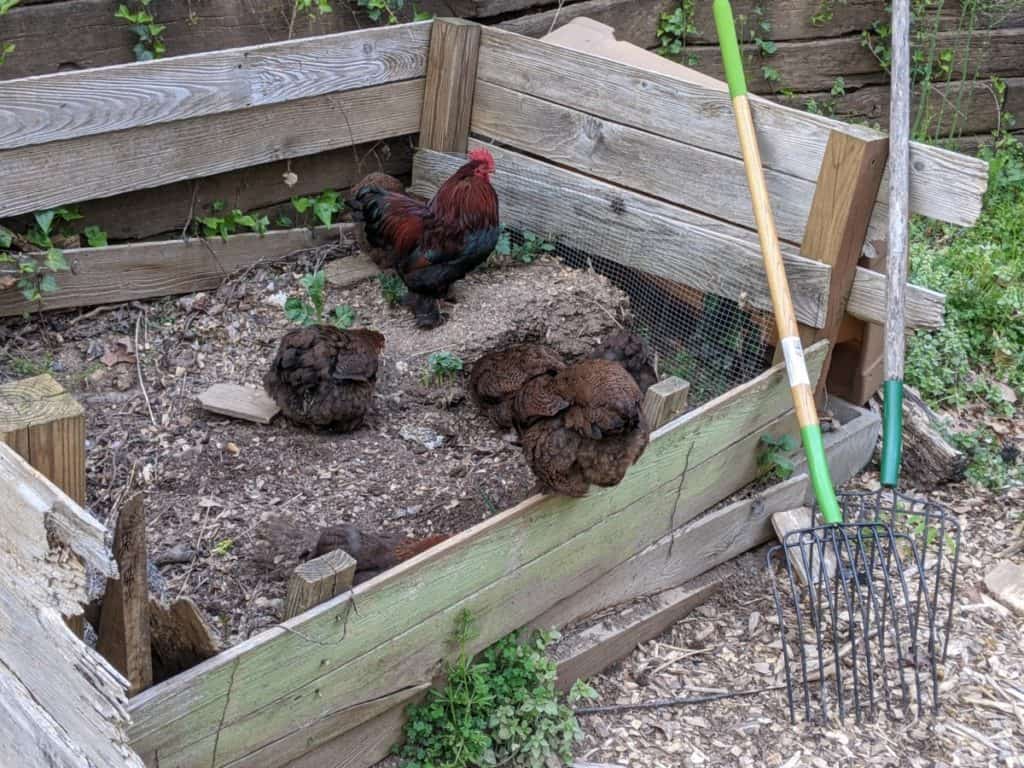Any good gardener knows the value of a compost pile. A good compost pile is created by collecting your organic garden cuttings and layering them using an ample mix of green and brown materials to provide nitrogen and carbon.
Add kitchen scraps and chicken droppings if you have them to the pile and allow everything to decay to provide a nutrient-filled organic fertilizer free from any chemicals or toxins!
Your compost pile can survive the winter and provide healthy fertilizer to spread over your beds in the spring. To ensure a healthy compost pile, plan the storage method, add the correct materials, monitor the moisture and temperature, turn the pile regularly, and don’t forget to insulate.
When the cold weather strikes, what happens to your carefully maintained compost pile? Will it survive the winter without any help from you?
By providing simple support and maintenance to your compost pile during winter, you will have a stockpile of rich fertilizer to use in the spring when planting your new season garden. Maintaining a winter compost pile is easy by following a few steps and tips.
What Are The Benefits Of Winter Composting?
A compost pile is designed to break down organic materials to produce a healthy fertilizer used to improve plant health and growth.
Temperature affects the process of the decomposition of organic material. The effects of temperature could be good or bad for your compost pile, depending on your local climate conditions.
The ideal temperatures for decomposition are between 90 degrees and 140 degrees Fahrenheit (32 degrees to 60 degrees Celsius.) When temperatures are much lower during the cold season, decomposition will slow down but will not stop completely.
If you have hot summer temperatures, the temperature in the compost pile can rise too high, causing the compost to begin to smolder and burn. In this case, winter composting would be a better option to keep the temperatures to a more acceptable level and prevent smoldering of the pile.
Maintaining a winter compost pile not only provides excellent fertilizer in the spring but also provides a natural way to get rid of your garden waste and kitchen scraps that would have otherwise ended up in a landfill. By maintaining your winter compost pile, you are doing your bit for the environment!
Top Tips For Composting In Winter
Even in freezing temperatures, your compost pile does not need to go dormant. Winter composting and pile maintenance is easy to manage. A few dedicated minutes of your time each week is all it takes to produce excellent compost.
Follow our top tips for easy and effective Winter composting.

1. Use Beneficial Materials For Winter Composting
When collecting materials to feed to the compost pile throughout winter, ensure that you have a 1 to 1 mix of browns and green organic materials. Mow, shred or chop all materials into smaller pieces before adding to the pile. Smaller pieces help to speed up the decomposing process.
- Green organic matter. Food waste like fruit and vegetable peels, old veggies, coffee grinds, tea leaves, crushed eggshells, lawn clippings, and yard trimmings.
- Brown organic matter. Dead leaves, twigs, animal manure (dog waste should never be used on plants grown for human consumption!), straw, brown paper products, paper towels, tissues, and shredded newspaper.
- Add worms to your compost pile. Worms will help the compost pile to decompose quickly by turning waste into rich soil.
2. Materials To Avoid In Winter Composting
Not all materials are beneficial to your compost pile. Some materials should not be added at all as they can harm the delicate balance of the decomposing materials and spread diseases. Identify which materials are not beneficial and discard them quickly.
- Diseased or infected plants. The infection could spread through the soil to healthy plants.
- Dairy products create odor problems and attract pests.
- Meat, fish, eggs, and poultry also create odor problems and could attract animals.
- Oils, fats, lard, and grease cancreate odor problems and attract unwanted insects and pests.
- Charcoal ash contains high amounts of sulfur and iron, which could damage your plants.
- Wood and leaves from Spruce, Juniper, and Pine.
- Any plants that have been treated with toxic chemicals like weed killers.
3. Chose the Right Storage Method For Your Winter Compost
Depending on how and where you live, you could have a huge outdoors compost pile, a small indoors pile, or even a pile in your trash can. The location of your compost pile in the yard will determine its success! Here are some ideas on how to store your compost.
Compost Piles
For many gardeners, an outdoors compost pile is the easiest to manage. Decide on the best location before starting your pile. Sunlight is the best way for the pile to heat up, so make sure that the pile will be in a warm spot throughout Winter. Even filtered sunlight will do the trick and get the materials decomposing quickly!
The pile size depends on the amount of materials you have to add to the pile and what you can manage!
Compost Bins
Compost bins sit directly on the ground. Materials are added to the bin from the top, and the composted material is removed through a door at the bottom. This method is handy for the gardener with a small space.
The materials do take longer to decompose as they cannot be turned. Animals can dig through from underneath to access the decomposing materials. Place the bin in a sunny spot and add plenty of dry materials and water to see it through the winter.
An indoor compost bin can become a great heat source, especially when placed in a greenhouse.
Compost Tumblers
Compost tumblers make year-round composting easy! It is a self-contained unit and can easily be moved to sunny areas in the winter and cooler areas in the spring.
A compost tumbler works well as you can feed it materials year-round. They are elevated off the ground, keeping them away from animals, and are odor-free! Simply turn the tumbler to mix the compost!

4. Monitor the Moisture in Your Compost Pile
Moisture is essential in keeping compost bacteria alive, but too much water can have a negative effect. The decomposing pile should be kept moist but not soggy. Add brown materials to absorb excess moisture.
Compost piles should be insulated during Winter to ensure that the compost remains active. Brown leaves, straw, or cardboard are good sources of insulation and will keep the pile warm and dry.
5. Know When To Turn The Compost Pile
The middle of the compost pile will heat up when it starts to decompose and cool down after the decomposition of the matter has finished. Cold weather slows down the decomposition process. To speed up the decomposing process, the pile should be turned regularly.
The pile should not be turned after November to ensure the heat is contained in the center of the pile and to keep bacteria active throughout Winter.

Conclusion
Maintaining a winter compost pile will positively impact your life and help you escape the winter blues by getting your blood pumping with some healthy exercise!
To ensure healthy compost for your Spring garden, you will have to feed the pile throughout the winter months. This means actively chopping, raking, and collecting the suitable materials to provide to the compost pile to keep it going during the cold season.
Preparation is key to a thriving compost pile, no matter the season. Save all your kitchen scraps, green and brown materials, and actively work on your winter compost pile to create wonderful fertilizer for your spring garden.

